#Kazanlak Museum of History
Explore tagged Tumblr posts
Text
Celebrated ‘Armor of Thracian Warriors’ Exhibition to Be Showcased at Valley of Odrysian Kings
Part of a poster for the “Panoply of the Thracian Warriors” exhibition developed by Bulgaria’s National institute and Museum of Archaeology in Sofia А poster presentation of the celebrated exhibition entitled “The Panoply of the Thracian Warriors,” a project of Bulgaria’s National Institute and Museum of Archaeology, is set to be showcased in Kazanlak as part of the annual Celebrations at the…
#Agighiol tomb#armor#Bulgarian Academy of Sciences#burial mound#burial mounds#corslet#exhibition#Golyama Kosmatka Mound#Golyama Kosmatka Tomb#greave#greaves#helmet#Kazanlak#Kazanlak Museum of History#Kazanlak Valley#King Seuthes III#mask helmet#Mezek Tomb#Mogilanska Mound Treasure#National Institute and Museum of Archaeology#Odrysian Kingdom#Odrysians#poster exhibition#Romania#Ruets#Ruets tomb#Seuthes III#sheath#Sofia University "St. Kliment Ohridski"#Svetitsata (The Saint) Mound
0 notes
Text
Discover Bulgaria's Hidden Gems on Your Next Europe Tour 🌍✨

Are you ready to explore Bulgaria's lesser-known wonders? This beautiful country is filled with hidden gems that offer rich history, stunning landscapes, and unique cultural experiences.
Here are some must-visit places to include in your Europe tour
Veliko Tarnovo - A picturesque town with a medieval fortress and charming cobblestone streets. Don't miss the stunning sound and light show at Tsarevets Fortress!
The Seven Rila Lakes - A breathtaking group of glacial lakes perfect for hiking and surrounded by stunning nature. The summer wildflowers make it a magical spot!
Koprivshtitsa - Step back in time in this colorful town known for its well-preserved architecture from the Bulgarian National Revival period. Explore local museums and enjoy the vibrant atmosphere.
Nessebar - A UNESCO World Heritage Site on the Black Sea coast, where ancient ruins meet beautiful beaches. It's a perfect mix of culture and relaxation!
Thracian Tomb of Kazanlak - Discover this ancient burial site with incredible murals that offer a glimpse into Thracian life and mythology. A true historical treasure!
Belogradchik Rocks - Marvel at these stunning rock formations and enjoy hiking trails that offer breathtaking views. The nearby fortress adds a historical touch to your adventure!
These hidden gems make Bulgaria a perfect addition to your European tour packages. Bulgaria has something special for everyone, whether you’re a history buff, a nature lover, or just looking for new adventures! 🌟✨
0 notes
Photo

The Enduring Symbolism of the Rose A Journey Through Time
Rose Imagery Across Cultures
Even in primitive drawings from the Stone Age, images of the rose are found, emphasizing its timeless significance. Interestingly, the Eskimo language lacks a specific word for “rose,” a fact that might elicit a smile.
The Rose in Ancient Texts and Myths
From ancient Babylon, India, Persia, Greece, and Rome to modern-day Europe and Africa, the rose features prominently in scriptures, sacred texts, myths, and symbols. Universally revered as a gift from the gods, it symbolizes unconditional love, fertility, and the celebration of life. In many cultures, the rose represents the Great Mother-Goddess, worshipped by ancient Thracians in the Kazanlak region Private Turkey Tours.
Legends and Lore
Countless legends surround the rose, from tales of the divine rose elixir in the gardens of Babylon to Cleopatra’s use of rose water to seek favor from the gods. Stories of the fabled fountains of the Taj Mahal and the cultivation of roses by Thracians, depicted in murals near Hissar, further enrich the rose’s mystique.
The Rose’s Enduring Presence
The rose continues to captivate us today, embodying fragility yet resilience in its mission to bestow beauty and tranquility through its blossoms and fragrance. Its ability to provide harmony and balance makes it a natural healer, drawing us to its soothing embrace.
Exploring Rose History at the Museum
The Museum of the Rose offers a unique glimpse into Bulgaria’s 350-year-old history of rose cultivation and processing. Divided into three main exhibition halls, the museum showcases an extensive collection of archive photos, tools for rose garden cultivation, vessels for storing and exporting rose attar, ancient distilleries, and the largest rose attar storage vessel in Bulgaria, known as “kunkuma.” The word “kunkuma,” derived from the sound of pouring rose attar, is native to Kazanlak, adding to the region’s rich cultural tapestry.
0 notes
Photo

The Enduring Symbolism of the Rose A Journey Through Time
Rose Imagery Across Cultures
Even in primitive drawings from the Stone Age, images of the rose are found, emphasizing its timeless significance. Interestingly, the Eskimo language lacks a specific word for “rose,” a fact that might elicit a smile.
The Rose in Ancient Texts and Myths
From ancient Babylon, India, Persia, Greece, and Rome to modern-day Europe and Africa, the rose features prominently in scriptures, sacred texts, myths, and symbols. Universally revered as a gift from the gods, it symbolizes unconditional love, fertility, and the celebration of life. In many cultures, the rose represents the Great Mother-Goddess, worshipped by ancient Thracians in the Kazanlak region Private Turkey Tours.
Legends and Lore
Countless legends surround the rose, from tales of the divine rose elixir in the gardens of Babylon to Cleopatra’s use of rose water to seek favor from the gods. Stories of the fabled fountains of the Taj Mahal and the cultivation of roses by Thracians, depicted in murals near Hissar, further enrich the rose’s mystique.
The Rose’s Enduring Presence
The rose continues to captivate us today, embodying fragility yet resilience in its mission to bestow beauty and tranquility through its blossoms and fragrance. Its ability to provide harmony and balance makes it a natural healer, drawing us to its soothing embrace.
Exploring Rose History at the Museum
The Museum of the Rose offers a unique glimpse into Bulgaria’s 350-year-old history of rose cultivation and processing. Divided into three main exhibition halls, the museum showcases an extensive collection of archive photos, tools for rose garden cultivation, vessels for storing and exporting rose attar, ancient distilleries, and the largest rose attar storage vessel in Bulgaria, known as “kunkuma.” The word “kunkuma,” derived from the sound of pouring rose attar, is native to Kazanlak, adding to the region’s rich cultural tapestry.
0 notes
Photo

The Enduring Symbolism of the Rose A Journey Through Time
Rose Imagery Across Cultures
Even in primitive drawings from the Stone Age, images of the rose are found, emphasizing its timeless significance. Interestingly, the Eskimo language lacks a specific word for “rose,” a fact that might elicit a smile.
The Rose in Ancient Texts and Myths
From ancient Babylon, India, Persia, Greece, and Rome to modern-day Europe and Africa, the rose features prominently in scriptures, sacred texts, myths, and symbols. Universally revered as a gift from the gods, it symbolizes unconditional love, fertility, and the celebration of life. In many cultures, the rose represents the Great Mother-Goddess, worshipped by ancient Thracians in the Kazanlak region Private Turkey Tours.
Legends and Lore
Countless legends surround the rose, from tales of the divine rose elixir in the gardens of Babylon to Cleopatra’s use of rose water to seek favor from the gods. Stories of the fabled fountains of the Taj Mahal and the cultivation of roses by Thracians, depicted in murals near Hissar, further enrich the rose’s mystique.
The Rose’s Enduring Presence
The rose continues to captivate us today, embodying fragility yet resilience in its mission to bestow beauty and tranquility through its blossoms and fragrance. Its ability to provide harmony and balance makes it a natural healer, drawing us to its soothing embrace.
Exploring Rose History at the Museum
The Museum of the Rose offers a unique glimpse into Bulgaria’s 350-year-old history of rose cultivation and processing. Divided into three main exhibition halls, the museum showcases an extensive collection of archive photos, tools for rose garden cultivation, vessels for storing and exporting rose attar, ancient distilleries, and the largest rose attar storage vessel in Bulgaria, known as “kunkuma.” The word “kunkuma,” derived from the sound of pouring rose attar, is native to Kazanlak, adding to the region’s rich cultural tapestry.
0 notes
Photo
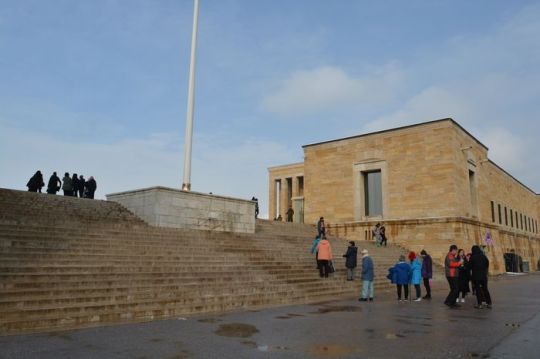
The Iskra Museum of Kazanlak
A Legacy of Patriotism
Established in 1901 by Kazanlak native Petar Topouzov, the Iskra Museum of History stands as one of Bulgaria’s oldest, most extensive, and beloved regional museums.
Rich Cultural Heritage
With over 50,000 original exhibits, the museum showcases the diverse material and spiritual culture of the Kazanlak region. Permanent exhibitions cover Archaeology, National Renaissance, Modern History, Ethnography, and Contemporary History.
Highlights of the Collection
Visitors are drawn to the museum’s impressive collections, including rare bone sickles (unique in Southeast Europe), medieval ceramics, weaponry, firearms, and traditional jewelry and costumes worn by past inhabitants of Kazanlak Private Turkey Tours.
Discoveries from Thracian Tombs
The new treasury hall proudly displays recent discoveries from Thracian tombs in the region, featuring remarkable artifacts such as the golden wreath of Seuthes III, ancient helmets, knee-pieces, horse appliques in gold and silver, and a rare assortment of coins and relics from the Thracian era.
Preserving Cultural Heritage
Dedicated to preserving, researching, and promoting the historic legacy of the Kazanlak region, the museum encompasses all Thracian tombs within the Valley of the Thracian Kings.
Journey Through Time The Ethnographic Complex
Stroll along the romantic cobbled streets of Kulata neighborhood, the oldest part of town, to discover the Ethnographic Complex. Relax in the courtyard with a glass of rose liqueur and preserves, immersing yourself in the serene ambiance of a historic Bulgarian home.
A Glimpse into the Past
Once owned by the Hadjienov family, prominent rose producers, the house now serves as a museum. Explore the primitive rose distillery, known as gyutpana, nestled under the shed. Nearby stands a typical rural house, reflecting the practicality and modesty of the era. The interior furnishings and layout offer insights into the patriarchal grandeur and family unity that once thrived within these walls.
0 notes
Photo

The Enduring Symbolism of the Rose A Journey Through Time
Rose Imagery Across Cultures
Even in primitive drawings from the Stone Age, images of the rose are found, emphasizing its timeless significance. Interestingly, the Eskimo language lacks a specific word for “rose,” a fact that might elicit a smile.
The Rose in Ancient Texts and Myths
From ancient Babylon, India, Persia, Greece, and Rome to modern-day Europe and Africa, the rose features prominently in scriptures, sacred texts, myths, and symbols. Universally revered as a gift from the gods, it symbolizes unconditional love, fertility, and the celebration of life. In many cultures, the rose represents the Great Mother-Goddess, worshipped by ancient Thracians in the Kazanlak region Private Turkey Tours.
Legends and Lore
Countless legends surround the rose, from tales of the divine rose elixir in the gardens of Babylon to Cleopatra’s use of rose water to seek favor from the gods. Stories of the fabled fountains of the Taj Mahal and the cultivation of roses by Thracians, depicted in murals near Hissar, further enrich the rose’s mystique.
The Rose’s Enduring Presence
The rose continues to captivate us today, embodying fragility yet resilience in its mission to bestow beauty and tranquility through its blossoms and fragrance. Its ability to provide harmony and balance makes it a natural healer, drawing us to its soothing embrace.
Exploring Rose History at the Museum
The Museum of the Rose offers a unique glimpse into Bulgaria’s 350-year-old history of rose cultivation and processing. Divided into three main exhibition halls, the museum showcases an extensive collection of archive photos, tools for rose garden cultivation, vessels for storing and exporting rose attar, ancient distilleries, and the largest rose attar storage vessel in Bulgaria, known as “kunkuma.” The word “kunkuma,” derived from the sound of pouring rose attar, is native to Kazanlak, adding to the region’s rich cultural tapestry.
0 notes
Photo

The Enduring Symbolism of the Rose A Journey Through Time
Rose Imagery Across Cultures
Even in primitive drawings from the Stone Age, images of the rose are found, emphasizing its timeless significance. Interestingly, the Eskimo language lacks a specific word for “rose,” a fact that might elicit a smile.
The Rose in Ancient Texts and Myths
From ancient Babylon, India, Persia, Greece, and Rome to modern-day Europe and Africa, the rose features prominently in scriptures, sacred texts, myths, and symbols. Universally revered as a gift from the gods, it symbolizes unconditional love, fertility, and the celebration of life. In many cultures, the rose represents the Great Mother-Goddess, worshipped by ancient Thracians in the Kazanlak region Private Turkey Tours.
Legends and Lore
Countless legends surround the rose, from tales of the divine rose elixir in the gardens of Babylon to Cleopatra’s use of rose water to seek favor from the gods. Stories of the fabled fountains of the Taj Mahal and the cultivation of roses by Thracians, depicted in murals near Hissar, further enrich the rose’s mystique.
The Rose’s Enduring Presence
The rose continues to captivate us today, embodying fragility yet resilience in its mission to bestow beauty and tranquility through its blossoms and fragrance. Its ability to provide harmony and balance makes it a natural healer, drawing us to its soothing embrace.
Exploring Rose History at the Museum
The Museum of the Rose offers a unique glimpse into Bulgaria’s 350-year-old history of rose cultivation and processing. Divided into three main exhibition halls, the museum showcases an extensive collection of archive photos, tools for rose garden cultivation, vessels for storing and exporting rose attar, ancient distilleries, and the largest rose attar storage vessel in Bulgaria, known as “kunkuma.” The word “kunkuma,” derived from the sound of pouring rose attar, is native to Kazanlak, adding to the region’s rich cultural tapestry.
0 notes
Photo

The Enduring Symbolism of the Rose A Journey Through Time
Rose Imagery Across Cultures
Even in primitive drawings from the Stone Age, images of the rose are found, emphasizing its timeless significance. Interestingly, the Eskimo language lacks a specific word for “rose,” a fact that might elicit a smile.
The Rose in Ancient Texts and Myths
From ancient Babylon, India, Persia, Greece, and Rome to modern-day Europe and Africa, the rose features prominently in scriptures, sacred texts, myths, and symbols. Universally revered as a gift from the gods, it symbolizes unconditional love, fertility, and the celebration of life. In many cultures, the rose represents the Great Mother-Goddess, worshipped by ancient Thracians in the Kazanlak region Private Turkey Tours.
Legends and Lore
Countless legends surround the rose, from tales of the divine rose elixir in the gardens of Babylon to Cleopatra’s use of rose water to seek favor from the gods. Stories of the fabled fountains of the Taj Mahal and the cultivation of roses by Thracians, depicted in murals near Hissar, further enrich the rose’s mystique.
The Rose’s Enduring Presence
The rose continues to captivate us today, embodying fragility yet resilience in its mission to bestow beauty and tranquility through its blossoms and fragrance. Its ability to provide harmony and balance makes it a natural healer, drawing us to its soothing embrace.
Exploring Rose History at the Museum
The Museum of the Rose offers a unique glimpse into Bulgaria’s 350-year-old history of rose cultivation and processing. Divided into three main exhibition halls, the museum showcases an extensive collection of archive photos, tools for rose garden cultivation, vessels for storing and exporting rose attar, ancient distilleries, and the largest rose attar storage vessel in Bulgaria, known as “kunkuma.” The word “kunkuma,” derived from the sound of pouring rose attar, is native to Kazanlak, adding to the region’s rich cultural tapestry.
0 notes
Photo
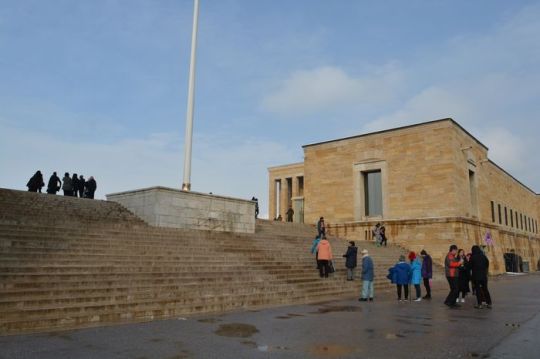
The Iskra Museum of Kazanlak
A Legacy of Patriotism
Established in 1901 by Kazanlak native Petar Topouzov, the Iskra Museum of History stands as one of Bulgaria’s oldest, most extensive, and beloved regional museums.
Rich Cultural Heritage
With over 50,000 original exhibits, the museum showcases the diverse material and spiritual culture of the Kazanlak region. Permanent exhibitions cover Archaeology, National Renaissance, Modern History, Ethnography, and Contemporary History.
Highlights of the Collection
Visitors are drawn to the museum’s impressive collections, including rare bone sickles (unique in Southeast Europe), medieval ceramics, weaponry, firearms, and traditional jewelry and costumes worn by past inhabitants of Kazanlak Private Turkey Tours.
Discoveries from Thracian Tombs
The new treasury hall proudly displays recent discoveries from Thracian tombs in the region, featuring remarkable artifacts such as the golden wreath of Seuthes III, ancient helmets, knee-pieces, horse appliques in gold and silver, and a rare assortment of coins and relics from the Thracian era.
Preserving Cultural Heritage
Dedicated to preserving, researching, and promoting the historic legacy of the Kazanlak region, the museum encompasses all Thracian tombs within the Valley of the Thracian Kings.
Journey Through Time The Ethnographic Complex
Stroll along the romantic cobbled streets of Kulata neighborhood, the oldest part of town, to discover the Ethnographic Complex. Relax in the courtyard with a glass of rose liqueur and preserves, immersing yourself in the serene ambiance of a historic Bulgarian home.
A Glimpse into the Past
Once owned by the Hadjienov family, prominent rose producers, the house now serves as a museum. Explore the primitive rose distillery, known as gyutpana, nestled under the shed. Nearby stands a typical rural house, reflecting the practicality and modesty of the era. The interior furnishings and layout offer insights into the patriarchal grandeur and family unity that once thrived within these walls.
0 notes
Photo

The Enduring Symbolism of the Rose A Journey Through Time
Rose Imagery Across Cultures
Even in primitive drawings from the Stone Age, images of the rose are found, emphasizing its timeless significance. Interestingly, the Eskimo language lacks a specific word for “rose,” a fact that might elicit a smile.
The Rose in Ancient Texts and Myths
From ancient Babylon, India, Persia, Greece, and Rome to modern-day Europe and Africa, the rose features prominently in scriptures, sacred texts, myths, and symbols. Universally revered as a gift from the gods, it symbolizes unconditional love, fertility, and the celebration of life. In many cultures, the rose represents the Great Mother-Goddess, worshipped by ancient Thracians in the Kazanlak region Private Turkey Tours.
Legends and Lore
Countless legends surround the rose, from tales of the divine rose elixir in the gardens of Babylon to Cleopatra’s use of rose water to seek favor from the gods. Stories of the fabled fountains of the Taj Mahal and the cultivation of roses by Thracians, depicted in murals near Hissar, further enrich the rose’s mystique.
The Rose’s Enduring Presence
The rose continues to captivate us today, embodying fragility yet resilience in its mission to bestow beauty and tranquility through its blossoms and fragrance. Its ability to provide harmony and balance makes it a natural healer, drawing us to its soothing embrace.
Exploring Rose History at the Museum
The Museum of the Rose offers a unique glimpse into Bulgaria’s 350-year-old history of rose cultivation and processing. Divided into three main exhibition halls, the museum showcases an extensive collection of archive photos, tools for rose garden cultivation, vessels for storing and exporting rose attar, ancient distilleries, and the largest rose attar storage vessel in Bulgaria, known as “kunkuma.” The word “kunkuma,” derived from the sound of pouring rose attar, is native to Kazanlak, adding to the region’s rich cultural tapestry.
0 notes
Photo

The Enduring Symbolism of the Rose A Journey Through Time
Rose Imagery Across Cultures
Even in primitive drawings from the Stone Age, images of the rose are found, emphasizing its timeless significance. Interestingly, the Eskimo language lacks a specific word for “rose,” a fact that might elicit a smile.
The Rose in Ancient Texts and Myths
From ancient Babylon, India, Persia, Greece, and Rome to modern-day Europe and Africa, the rose features prominently in scriptures, sacred texts, myths, and symbols. Universally revered as a gift from the gods, it symbolizes unconditional love, fertility, and the celebration of life. In many cultures, the rose represents the Great Mother-Goddess, worshipped by ancient Thracians in the Kazanlak region Private Turkey Tours.
Legends and Lore
Countless legends surround the rose, from tales of the divine rose elixir in the gardens of Babylon to Cleopatra’s use of rose water to seek favor from the gods. Stories of the fabled fountains of the Taj Mahal and the cultivation of roses by Thracians, depicted in murals near Hissar, further enrich the rose’s mystique.
The Rose’s Enduring Presence
The rose continues to captivate us today, embodying fragility yet resilience in its mission to bestow beauty and tranquility through its blossoms and fragrance. Its ability to provide harmony and balance makes it a natural healer, drawing us to its soothing embrace.
Exploring Rose History at the Museum
The Museum of the Rose offers a unique glimpse into Bulgaria’s 350-year-old history of rose cultivation and processing. Divided into three main exhibition halls, the museum showcases an extensive collection of archive photos, tools for rose garden cultivation, vessels for storing and exporting rose attar, ancient distilleries, and the largest rose attar storage vessel in Bulgaria, known as “kunkuma.” The word “kunkuma,” derived from the sound of pouring rose attar, is native to Kazanlak, adding to the region’s rich cultural tapestry.
0 notes
Photo

The Enduring Symbolism of the Rose A Journey Through Time
Rose Imagery Across Cultures
Even in primitive drawings from the Stone Age, images of the rose are found, emphasizing its timeless significance. Interestingly, the Eskimo language lacks a specific word for “rose,” a fact that might elicit a smile.
The Rose in Ancient Texts and Myths
From ancient Babylon, India, Persia, Greece, and Rome to modern-day Europe and Africa, the rose features prominently in scriptures, sacred texts, myths, and symbols. Universally revered as a gift from the gods, it symbolizes unconditional love, fertility, and the celebration of life. In many cultures, the rose represents the Great Mother-Goddess, worshipped by ancient Thracians in the Kazanlak region Private Turkey Tours.
Legends and Lore
Countless legends surround the rose, from tales of the divine rose elixir in the gardens of Babylon to Cleopatra’s use of rose water to seek favor from the gods. Stories of the fabled fountains of the Taj Mahal and the cultivation of roses by Thracians, depicted in murals near Hissar, further enrich the rose’s mystique.
The Rose’s Enduring Presence
The rose continues to captivate us today, embodying fragility yet resilience in its mission to bestow beauty and tranquility through its blossoms and fragrance. Its ability to provide harmony and balance makes it a natural healer, drawing us to its soothing embrace.
Exploring Rose History at the Museum
The Museum of the Rose offers a unique glimpse into Bulgaria’s 350-year-old history of rose cultivation and processing. Divided into three main exhibition halls, the museum showcases an extensive collection of archive photos, tools for rose garden cultivation, vessels for storing and exporting rose attar, ancient distilleries, and the largest rose attar storage vessel in Bulgaria, known as “kunkuma.” The word “kunkuma,” derived from the sound of pouring rose attar, is native to Kazanlak, adding to the region’s rich cultural tapestry.
0 notes
Photo
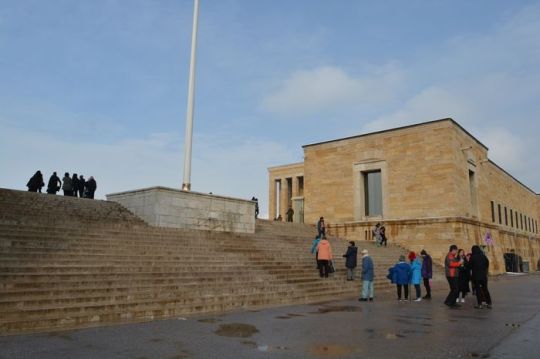
The Iskra Museum of Kazanlak
A Legacy of Patriotism
Established in 1901 by Kazanlak native Petar Topouzov, the Iskra Museum of History stands as one of Bulgaria’s oldest, most extensive, and beloved regional museums.
Rich Cultural Heritage
With over 50,000 original exhibits, the museum showcases the diverse material and spiritual culture of the Kazanlak region. Permanent exhibitions cover Archaeology, National Renaissance, Modern History, Ethnography, and Contemporary History.
Highlights of the Collection
Visitors are drawn to the museum’s impressive collections, including rare bone sickles (unique in Southeast Europe), medieval ceramics, weaponry, firearms, and traditional jewelry and costumes worn by past inhabitants of Kazanlak Private Turkey Tours.
Discoveries from Thracian Tombs
The new treasury hall proudly displays recent discoveries from Thracian tombs in the region, featuring remarkable artifacts such as the golden wreath of Seuthes III, ancient helmets, knee-pieces, horse appliques in gold and silver, and a rare assortment of coins and relics from the Thracian era.
Preserving Cultural Heritage
Dedicated to preserving, researching, and promoting the historic legacy of the Kazanlak region, the museum encompasses all Thracian tombs within the Valley of the Thracian Kings.
Journey Through Time The Ethnographic Complex
Stroll along the romantic cobbled streets of Kulata neighborhood, the oldest part of town, to discover the Ethnographic Complex. Relax in the courtyard with a glass of rose liqueur and preserves, immersing yourself in the serene ambiance of a historic Bulgarian home.
A Glimpse into the Past
Once owned by the Hadjienov family, prominent rose producers, the house now serves as a museum. Explore the primitive rose distillery, known as gyutpana, nestled under the shed. Nearby stands a typical rural house, reflecting the practicality and modesty of the era. The interior furnishings and layout offer insights into the patriarchal grandeur and family unity that once thrived within these walls.
0 notes
Photo
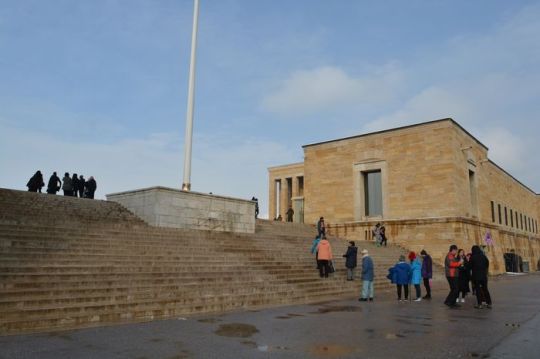
The Iskra Museum of Kazanlak
A Legacy of Patriotism
Established in 1901 by Kazanlak native Petar Topouzov, the Iskra Museum of History stands as one of Bulgaria’s oldest, most extensive, and beloved regional museums.
Rich Cultural Heritage
With over 50,000 original exhibits, the museum showcases the diverse material and spiritual culture of the Kazanlak region. Permanent exhibitions cover Archaeology, National Renaissance, Modern History, Ethnography, and Contemporary History.
Highlights of the Collection
Visitors are drawn to the museum’s impressive collections, including rare bone sickles (unique in Southeast Europe), medieval ceramics, weaponry, firearms, and traditional jewelry and costumes worn by past inhabitants of Kazanlak Private Turkey Tours.
Discoveries from Thracian Tombs
The new treasury hall proudly displays recent discoveries from Thracian tombs in the region, featuring remarkable artifacts such as the golden wreath of Seuthes III, ancient helmets, knee-pieces, horse appliques in gold and silver, and a rare assortment of coins and relics from the Thracian era.
Preserving Cultural Heritage
Dedicated to preserving, researching, and promoting the historic legacy of the Kazanlak region, the museum encompasses all Thracian tombs within the Valley of the Thracian Kings.
Journey Through Time The Ethnographic Complex
Stroll along the romantic cobbled streets of Kulata neighborhood, the oldest part of town, to discover the Ethnographic Complex. Relax in the courtyard with a glass of rose liqueur and preserves, immersing yourself in the serene ambiance of a historic Bulgarian home.
A Glimpse into the Past
Once owned by the Hadjienov family, prominent rose producers, the house now serves as a museum. Explore the primitive rose distillery, known as gyutpana, nestled under the shed. Nearby stands a typical rural house, reflecting the practicality and modesty of the era. The interior furnishings and layout offer insights into the patriarchal grandeur and family unity that once thrived within these walls.
0 notes
Photo
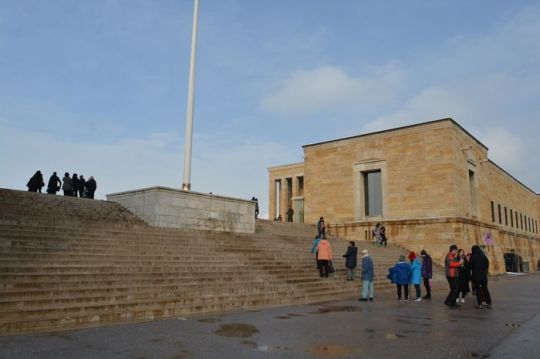
The Iskra Museum of Kazanlak
A Legacy of Patriotism
Established in 1901 by Kazanlak native Petar Topouzov, the Iskra Museum of History stands as one of Bulgaria’s oldest, most extensive, and beloved regional museums.
Rich Cultural Heritage
With over 50,000 original exhibits, the museum showcases the diverse material and spiritual culture of the Kazanlak region. Permanent exhibitions cover Archaeology, National Renaissance, Modern History, Ethnography, and Contemporary History.
Highlights of the Collection
Visitors are drawn to the museum’s impressive collections, including rare bone sickles (unique in Southeast Europe), medieval ceramics, weaponry, firearms, and traditional jewelry and costumes worn by past inhabitants of Kazanlak Private Turkey Tours.
Discoveries from Thracian Tombs
The new treasury hall proudly displays recent discoveries from Thracian tombs in the region, featuring remarkable artifacts such as the golden wreath of Seuthes III, ancient helmets, knee-pieces, horse appliques in gold and silver, and a rare assortment of coins and relics from the Thracian era.
Preserving Cultural Heritage
Dedicated to preserving, researching, and promoting the historic legacy of the Kazanlak region, the museum encompasses all Thracian tombs within the Valley of the Thracian Kings.
Journey Through Time The Ethnographic Complex
Stroll along the romantic cobbled streets of Kulata neighborhood, the oldest part of town, to discover the Ethnographic Complex. Relax in the courtyard with a glass of rose liqueur and preserves, immersing yourself in the serene ambiance of a historic Bulgarian home.
A Glimpse into the Past
Once owned by the Hadjienov family, prominent rose producers, the house now serves as a museum. Explore the primitive rose distillery, known as gyutpana, nestled under the shed. Nearby stands a typical rural house, reflecting the practicality and modesty of the era. The interior furnishings and layout offer insights into the patriarchal grandeur and family unity that once thrived within these walls.
0 notes